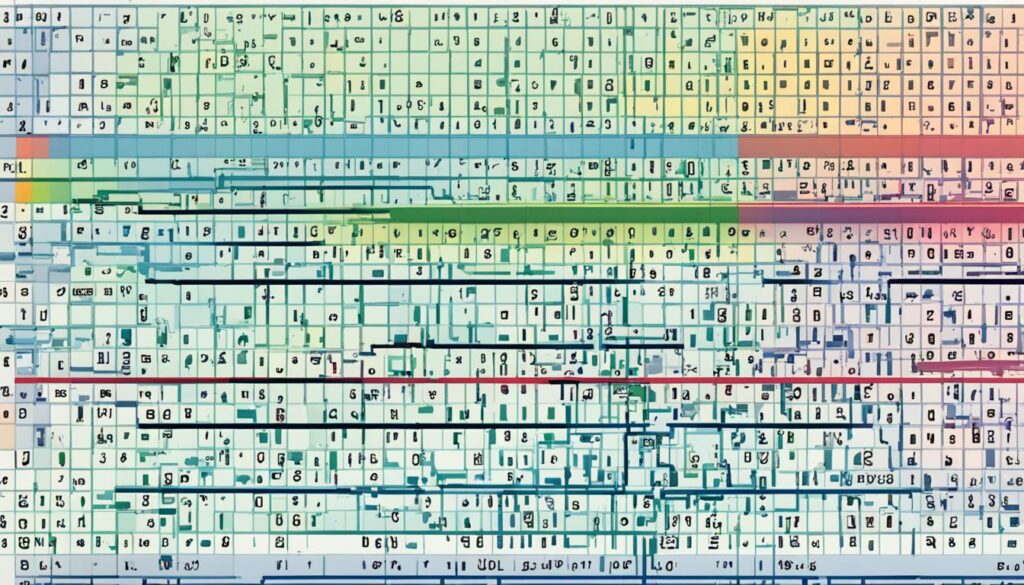In this article, we will delve into the world of Verilog defines and explore how they can revolutionize your coding experience in Hardware Description Language (HDL) projects. By leveraging macros in Verilog, you can enhance code modularity, maintainability, and readability, ultimately improving the efficiency of your Verilog design.
Verilog defines, also known as macro definitions, are a powerful feature of the Verilog language that allows you to create symbolic constants and replace them with their corresponding values during compilation, effectively simplifying your code. These defines can be used to define constants, conditional expressions, and even complete code blocks, providing a robust foundation for building complex HDL designs.
Using defines in Verilog comes with numerous benefits. By utilizing macros, you can streamline your coding process, making your code more modular and easily maintainable. Macros also enhance code readability, allowing you and your team to quickly grasp the design intent and make informed design decisions.
In the following sections, we will delve deeper into the world of Verilog defines:
- Understanding what defines in Verilog are and how they work
- Learning how to effectively incorporate defines into your Verilog designs
- Exploring advanced techniques using defines, including macros with parameters and conditional macros
- Discussing the benefits of utilizing defines in Verilog, such as code modularity, maintainability, and readability
- Highlighting potential pitfalls and providing best practices for using defines in Verilog
- Providing real-world examples and use cases to showcase the practical application of defines in Verilog
By the end of this article, you will have a comprehensive understanding of defines in Verilog and how to leverage them effectively for improved coding efficiency in your HDL projects.
Table of Contents
What are `Defines in Verilog?
Before diving into the benefits of defines in Verilog, we need to understand what they are and how they work. Defines in Verilog are used for defining macros that simplify code and make it more maintainable.
Verilog preprocessing involves using defines to replace specific strings of text in your code with predefined values. This process is essential for creating reusable code and reducing redundancy in your HDL projects.
Macro definition in Verilog allows you to create named constants, which can be handy when you have values that remain constant throughout your code. By using defines, you can give these constants meaningful names, making your code more readable and self-explanatory.
How Verilog Defines Work
To define a macro in Verilog, you use the `define directive followed by the name and value of the macro. For example:
`define NUM_REGISTERS 8
`define ENABLE_DETECTION 1
Once defined, you can use the macro name throughout your Verilog code. Whenever the preprocessor encounters the macro name, it replaces it with the corresponding value. This substitution occurs before the actual compilation of the code, making it an efficient and convenient way to manage repetitive or constant code segments.
For example, if you have the following line of code:
reg [7:0] data [NUM_REGISTERS];
The preprocessor would replace NUM_REGISTERS with 8, resulting in the following code:
reg [7:0] data [8];
This simple substitution significantly simplifies your code and makes it more flexible. You can easily modify the value of a macro at a single location, and the changes will propagate throughout your code.
Defines can also be used in conditional compilation, allowing you to include or exclude specific blocks of code based on macro values. This enables you to create code variants based on different configurations or target platforms, enhancing the versatility of your HDL projects.
It’s important to note that the use of defines in Verilog should be done judiciously and with clear intentions. Overuse or misuse of macros can lead to code that is difficult to understand and maintain. Therefore, it is recommended to follow best practices and use defines in a structured and well-documented manner.
By harnessing the power of Verilog preprocessing and macro definition, you can create more modular, reusable, and adaptable code in your HDL projects.
How to Use `Defines in Verilog
Now that we know what `defines are, let’s learn how to use them effectively in Verilog. Incorporating macros into your Verilog design can simplify coding and improve overall productivity. Here, we will discuss the syntax, usage, and best practices for utilizing `defines in Verilog.
Syntax of Using Macros in Verilog
The syntax for using macros in Verilog involves defining the macro using the `define directive, followed by the macro name and its corresponding value. Macros are typically written in uppercase letters to distinguish them from other variables or constants. Here’s an example:
`define CLK_PERIOD 10
In the above example, we define a macro named CLK_PERIOD with the value 10. This macro can now be used in the Verilog code to represent a clock period.
Usage of Macros in Verilog
Macros can be used in various ways to simplify coding and improve code readability. They can replace repetitive code snippets or constants with a shorter and more meaningful representation. Here are some examples:
- Using a macro for a constant value:
`define DATA_WIDTH 8 - Using a macro in conditional statements:
`define ENABLE_OUTPUT - Using a macro for pin assignments:
`define LED_PIN 7
Best Practices for Incorporating Macros
Here are some best practices to consider when using `defines in Verilog:
- Choose meaningful names for your macros to enhance code readability.
- Use macros sparingly and only when they simplify the code or improve maintainability.
- Avoid nesting macros within macros to prevent confusion.
- Document your macros to provide clear explanations and usage examples for future developers.
By following these best practices, you can effectively leverage macros in Verilog and enhance the efficiency of your coding process.

Comparison of Macro Usage
| Code Before Using Macros | Code After Using Macros |
|---|---|
if (clk_count == 100) |
if (clk_count == CLK_PERIOD) |
output_data = data[7:0]; |
output_data = data[DATA_WIDTH-1:0]; |
io_expander.setPin(7, 1); |
io_expander.setPin(LED_PIN, 1); |
In the table above, we compare the code before and after using macros. As you can see, using macros simplifies the code, making it more readable and maintainable. The macros provide a concise representation for frequently used values or code patterns, reducing the chances of errors and improving overall design efficiency.
Advanced `Defines Techniques
In this section, we will explore some advanced techniques that allow us to harness the full power of defines in Verilog. These techniques, including the use of macros with parameters and conditional macros, can greatly enhance the flexibility and efficiency of our code.
Macros with Parameters
One of the key advantages of defines in Verilog is the ability to create macros with parameters. With this technique, we can define a macro that takes in one or more parameters, allowing for greater customization and reusability of our code.
For example, let’s say we have a repetitive block of code that performs a similar operation on different variables. Instead of writing the same code multiple times, we can create a macro with parameters that takes in the variable name as an argument. This way, we can reuse the macro for different variables without duplicating the code.
By utilizing macros with parameters, we can significantly reduce code duplication and improve the maintainability of our Verilog designs.
Conditional Macros
Another powerful technique in Verilog is the use of conditional macros. Conditional macros allow us to conditionally include or exclude blocks of code based on specific conditions.
For example, let’s say we have a design that requires different sets of functionality depending on the target platform. By using conditional macros, we can define different configurations of our code and selectively include the relevant blocks based on the target platform.
Conditional macros pave the way for writing highly configurable and platform-independent code by enabling us to tailor the behavior of our Verilog design based on specific conditions.
Now that we understand the advanced techniques of using macros with parameters and conditional macros, let’s delve into their syntax and explore some practical examples to solidify our understanding.

Benefits of Using `Defines in Verilog
When it comes to coding in Verilog, utilizing `defines can offer several advantages that greatly enhance the overall development process. In this section, we will explore how macros improve code modularity, maintainability, and readability, ultimately enabling us to make more informed design decisions.
Code Modularity
One of the key benefits of using `defines in Verilog is the ability to enhance code modularity. By defining macros for commonly used code segments or parameters, we can encapsulate functionality and create reusable modules that can be easily integrated into different parts of our design. This modular approach promotes code reuse, reduces duplication, and improves overall design efficiency.
Code Maintainability
`Defines also contribute to code maintainability in Verilog. By using intuitive macro names and concise syntax, we can improve the readability and understandability of our codebase. When changes or updates are required, modifying a single `define statement can automatically propagate the modifications throughout the code, simplifying the maintenance process and reducing the likelihood of errors.
Code Readability
Readable code is crucial for effective collaboration and future maintenance. With `defines, we can introduce meaningful names to convey the purpose and functionality of different code sections. This enhances code readability and reduces the cognitive load when reviewing or understanding complex Verilog designs. By abstracting complex code segments into a single `define, we can make our code more concise and easier to comprehend.
Overall, the benefits of using `defines in Verilog are significant. They promote code modularity, simplify code maintenance, and enhance code readability. By leveraging these advantages, we can streamline our Verilog designs, foster collaboration, and ultimately improve the efficiency of our HDL projects.
Potential Pitfalls and Best Practices for Using `Defines in Verilog
While `defines can be powerful tools in Verilog coding, they can also introduce potential pitfalls if not used correctly. It’s essential to understand these pitfalls and follow best practices to ensure efficient and error-free Verilog designs. In this section, we will explore common challenges that can arise when working with `defines and provide practical solutions to overcome them.
Verilog Macro Pitfalls
When using `defines in Verilog, it’s crucial to be aware of potential pitfalls that can impact code reliability and maintainability. One common pitfall is the misuse of macros, leading to unexpected results and logical errors in your designs. For example, defining a macro without proper scoping or redefining a macro within the same module can cause confusion and undesirable behavior.
Another pitfall to avoid is overusing `defines excessively, leading to code bloat and reduced readability. While macros can simplify code, excessive use can make the code difficult to understand and maintain. It’s crucial to strike a balance between using macros to enhance code readability and avoiding unnecessary complexity.
In addition, using `defines incorrectly in conditional statements or parameterized macros can introduce subtle bugs that are hard to identify. It’s essential to thoroughly test your code and validate the behavior of macros under different scenarios to ensure their correctness.
Best Practices in Verilog Coding
To mitigate these potential pitfalls and ensure effective usage of `defines in Verilog, it’s important to follow best practices in your coding process. These best practices include:
- Properly scope macros: Define macros with appropriate scoping to avoid conflicts and ensure clear visibility within your design.
- Use meaningful names: Choose descriptive names for macros to enhance code understandability and maintainability.
- Avoid macro redefinition: Prevent errors by avoiding redefinition of macros within the same module.
- Test and validate: Thoroughly test your code with different test cases to ensure the correct behavior of macros under various conditions.
- Limit macro usage: Use macros judiciously to maintain code readability and prevent unnecessary complexity.
By following these best practices, you can maximize the benefits of `defines in Verilog and produce clean, efficient, and maintainable code.
Verilog `Defines Examples and Use Cases
Now that we have explored the concept and usage of `defines in Verilog, it’s time to delve into some real-world examples and use cases. These examples will demonstrate the practical application of macros in Verilog and how they can simplify complex code and improve overall design efficiency.
Example 1: Code Reusability
One common use case of `defines in Verilog is to achieve code reusability. By defining commonly used code snippets as macros, you can easily reuse them throughout your design without rewriting the same code multiple times. This not only saves time but also enhances the maintainability of your codebase.
Example 2: Parameterized Macros
Verilog macros can also be parameterized, allowing you to create flexible and customizable code blocks. For instance, you can define a macro for a multiplication operation that takes input operands as parameters. By varying the input parameters, you can easily generate different instances of the multiplication block without duplicating code.
Example 3: Conditional Macros
Conditional macros in Verilog enable you to implement design-specific variations based on certain conditions. For example, you can define a macro that includes additional code only when certain design parameters are met. This allows for easy customization and adaptation of your design based on specific requirements.
These examples showcase the versatility and power of `defines in Verilog. By leveraging macros effectively, you can streamline your code, reduce redundancy, and improve the overall efficiency of your Verilog design.
Use Case: Memory Controller
Let’s consider a use case where you are designing a memory controller for a complex system. Implementing the memory controller involves several intricate operations, such as address decoding and data handling.
Using `defines, you can create macros for each operation to simplify the code and make it more readable. For example, you can define a macro for the address decoding logic, another macro for the data handling logic, and so on. These macros can then be easily invoked and reused throughout the memory controller implementation, reducing both the code complexity and the chances of errors.
By utilizing `defines to encapsulate complex operations and control logic, you can modularize your code and enhance the overall maintainability and readability of your Verilog design.
Use Case: Finite State Machine
Another compelling use case for `defines in Verilog is the implementation of a finite state machine (FSM). FSMs involve multiple states and state transitions, which can be challenging to represent and manage in traditional code.
By using `defines for each state and transition, you can simplify the FSM implementation significantly. Each state and transition can be defined as a macro, making the code more intuitive and easier to understand. Additionally, this approach allows for easy modifications and additions to the FSM without disrupting the entire code structure.
| State | Macro |
|---|---|
| Idle | IDLE_STATE |
| Read | READ_STATE |
| Write | WRITE_STATE |
| Transition | TRANSITION_MACRO |
In the table above, we can see an example of how `defines can be used to represent the different states and transition in an FSM. Each state is assigned a unique macro, making it easier to reference and incorporate within the FSM logic.
These use cases demonstrate the versatility and practicality of `defines in real-world Verilog designs. By using macros effectively, you can simplify complex logic, improve code modularity, and enhance overall design efficiency.
Conclusion
In conclusion, `defines in Verilog are a powerful feature that can significantly enhance the coding experience and efficiency of your HDL projects. By leveraging macros effectively, you can streamline your Verilog design and improve the maintainability of your codebase.
Verilog design often involves complex logic and intricate coding, making it essential to find ways to simplify and optimize the development process. Macros in HDL, such as `defines, provide a practical solution to this challenge. They allow you to define reusable code snippets and simplify intricate logic, making your Verilog coding more manageable and readable.
With the ability to define macro aliases for frequently used expressions, constants, and even complete code blocks, you can reduce duplication, code repetition, and improve code maintainability. This saves time and effort, enabling you to focus on the higher-level design aspects of your projects. Additionally, by leveraging conditional macros and macros with parameters, you can create dynamic and flexible code structures that adapt to different requirements and scenarios.
As you continue your journey in Verilog design, keep in mind the benefits of using `defines and the best practices outlined in this article. By incorporating macros into your coding workflow, you’ll not only streamline your Verilog projects but also enhance your productivity and code quality.

